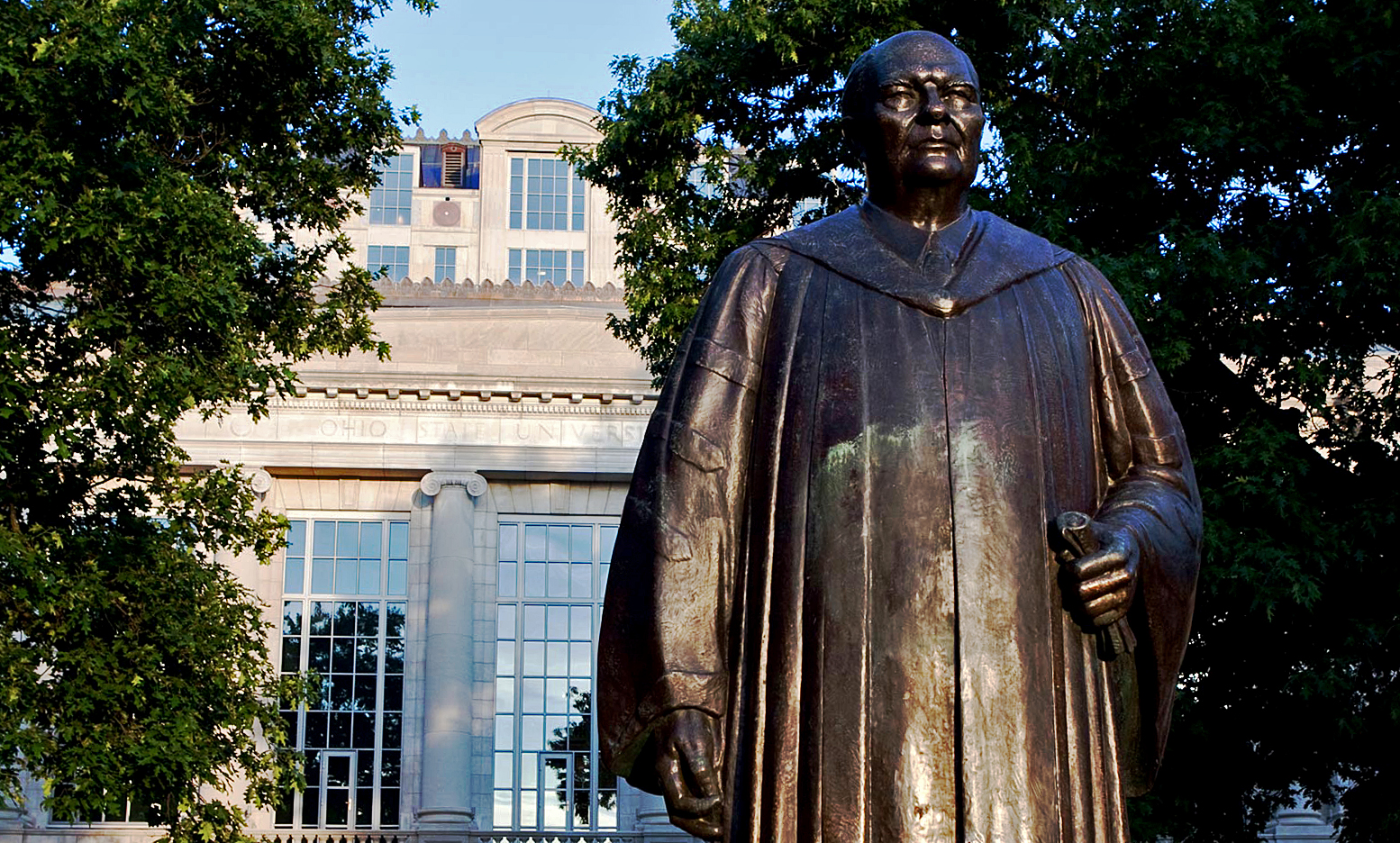Over a century’s worth of Buckeye history sits on three-story shelves in a building the size of a warehouse.
What’s on these shelves? Boxes of photos, student club membership lists, yearbooks, commencement pamphlets and Ohio State football game programs, just to name a few.
These piles of memories are all housed and preserved within The Ohio State University Archives, located at 2700 Kenny Rd. on West Campus.
The Archives were created in 1965, when the university was nearing its 100th year. It was then that the importance of preserving Buckeye history was established.
“The whole mission of The Archives is to document the history of the university,” Tamar Chute, university archivist and head of archives, said. “If you’ve seen photos of campus or athletics at various restaurants on campus, they get them from us.”
Kevlin Haire, assistant university archivist, described the archives mission.
“We collect today’s information so that people 50 years from now know what happened before,” Haire said.
Now, The Archives are celebrating its own history, honoring their 60th anniversary.
One event was held on Sept. 17, acting as a celebration for The Archives, as well as showcasing the pride that the employees have.
“I love the work that I’m able to do here,” Michelle Drobik, reference archivist, said. “I feel that there’s a purpose in doing it.”
This purpose is strong and relevant. There are many tasks that The Archives carry out that it’s almost impossible to list them all.
They can provide images for a Buckeye-themed room, help a person find information on a relative that attended in 1921 or even just help clear out a space in the attic. The Archives can also provide the raw materials researchers need to study Ohio State history.
“I think the variety for me is one of the biggest reasons I work here,” Haire said. “It’s always something different every day.”
For over 60 years, The Archives has assisted the public and organizations on campus. For instance, through the help of Drobik, The Lantern newsroom was able to be decorated in images of its own history.
“I appreciate the opportunity to be able to work with university staff like that on projects to commemorate their history,” Drobik said.
Not only do The Archives act as a means of preserving history, but it is also a way for people to educate themselves about Ohio State and its past.
It can range from just a pure athletic standpoint, or perhaps something different, like what students wore in the 1970s.
Chute, offering an example, shared a series of photographs of the Oval and the college of law auditorium, which is now called the William B. Saxbe Law Auditorium, showing how each has changed over the decades.
“If we collect things that will help people remember, then that ties the whole experience together,” Chute said.
This story was updated Oct. 7 at 3:27 p.m. to correct a typo in one of the quotes.














